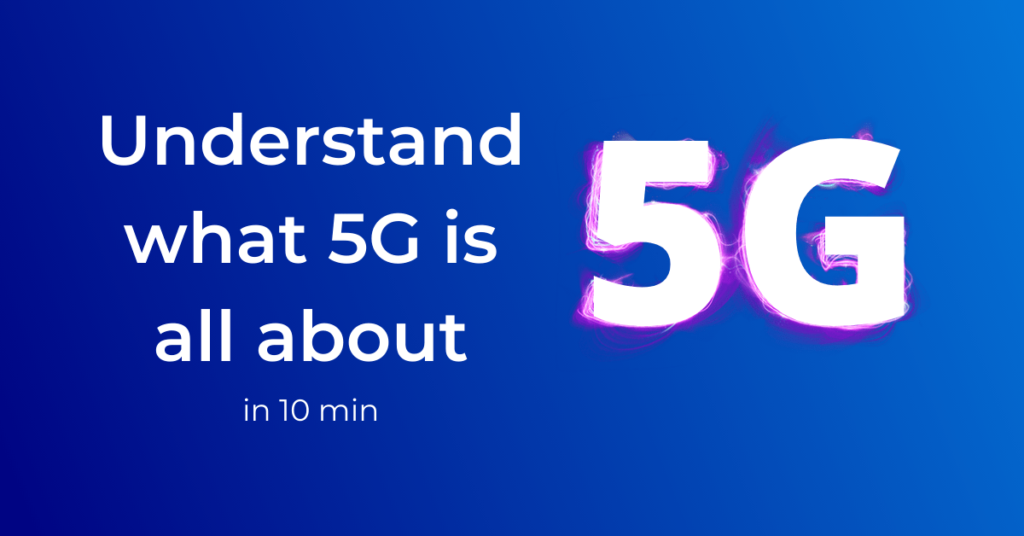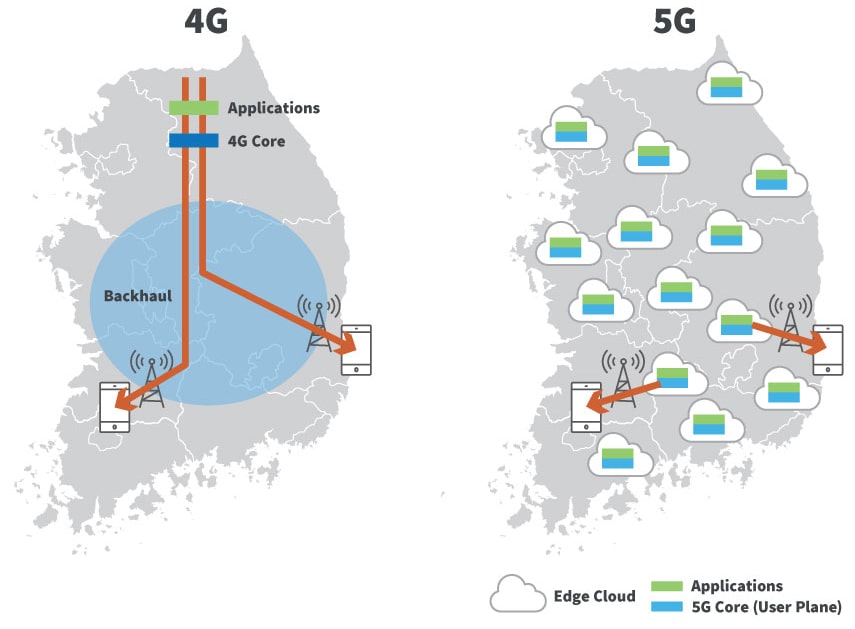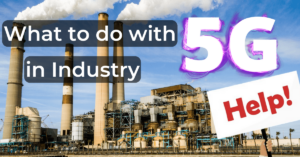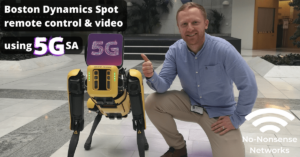Understanding what 5G is all about can be quite complex. Here we’ll try to give you a good overview and keep it simple so you are totally up to speed with 5G. Before we dive in, let’s take a quick look back at 4G because it explains why 5G was created in the first place.
How did 4G come about?
The research on 4G (and LTE, the most known technology within 4G) started already around 2004. It took until 2009 however to standardize the first release of 4G. Since then 4G LTE has been deployed in most countries and is still being deployed today, more than 10 years later.
The requirements for 4G described a mobile internet connection of up to 100 Mbps for moving devices and even up to 1 Gbps when not moving. However, the first version of LTE did not reach the requirements to be classified as 4G, as it could only achieve 10 Mbps downlink and 5 Mbps uplink. Over the past 10 years, 4G LTE networks and devices have evolved to go from 10 Mbps to above 3 Gbps if all conditions are met (which is almost nowhere the case).
If you remember 3G, you’ll know that 4G LTE has been a huge leap forward and enabled the mobile broadband internet we know today. However, with 4G, the main focus was increasing the (downlink) network speed so you could download business documents on the go or watch that YouTube video while not at home.
Why was 5G developed?
By around 2015, other needs than fast mobile internet started to pop up. 4G and the spectrum used, got more and more saturated and the backward compatibility of 4G LTE started to impose limitations.
So the research began on the 5th generation of mobile networks or 5G. When researchers looked at future trends, it was clear that the next generation of mobile networks needed more than only speed. 5G would need the versatility to handle 3 main categories of use cases:
- Enhanced mobile broadband:
This is all about attaining even higher mobile speeds and capacity to serve the fast-growing need for data. Also, new broadband use cases such as augmented reality or UltraHD video streaming demanded higher network capacity. - Ultra-reliable low-latency communication:
Connections that need very low latency (or delays) and high reliability e.g. mission-critical communication for safety services, autonomous driving vehicles, factory automation, etc. - Massive Machine type communication:
Massive amounts of internet-connected devices. Many of them will be low-power and low-cost to enable communication for almost any kind of object or sensor and send data to the cloud.
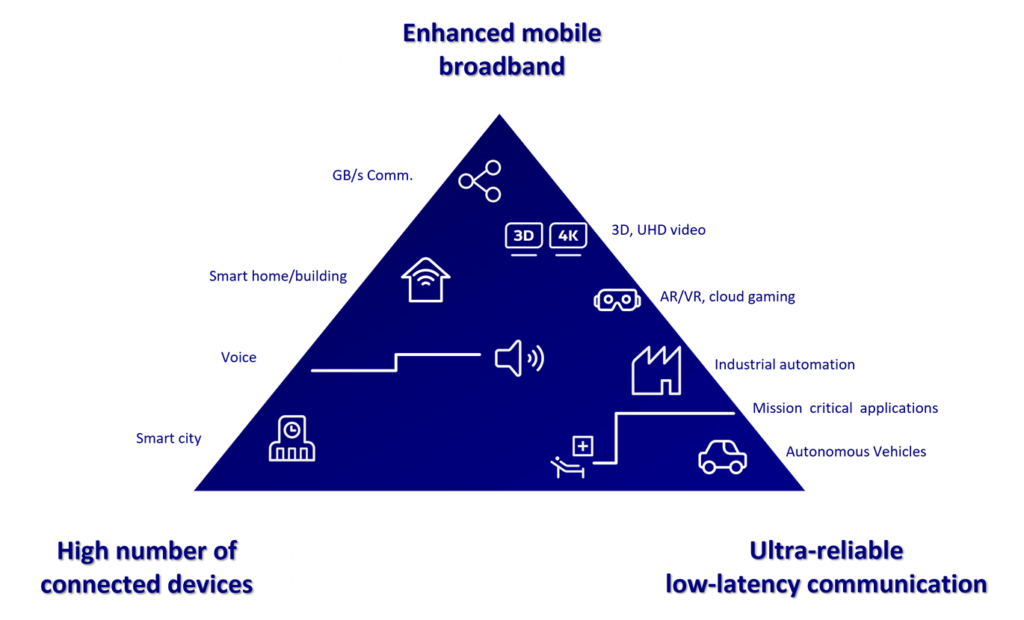
That is why you will typically see the above triangle for 5G use cases. Some of these use cases were already built on top of 4G after its conception, but the backward compatibility of LTE would not fully allow what was going to be needed. So work started on a new radio technology called ‘New Radio’ (NR) which would break free of LTE limitations. With the same idea in mind, researchers redesigned the mobile network core.
What does 5G enable?
Higher speeds, capacity, and new frequency bands
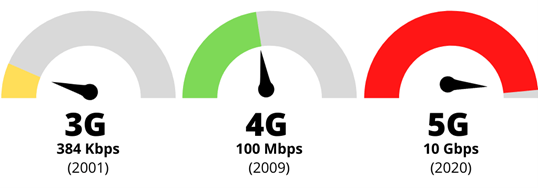
The requirements for 5G specify data rates up to 10-20 Gbps to meet the fast-growing need for data. To achieve these enormous speeds, new spectrum and large unused consecutive blocks of frequency would be needed. That is why regulatory agencies looked for new spectrum that could be used for 5G.
Many wireless networks already used most of the frequency spectrum below 3 GHz. The reason is simple: the lower the frequency, the further the range of the signal, and the fewer cell towers you need to build. 4G LTE was no exception and typical frequency blocks (also called channel widths) that telecom operators could buy to deploy 4G were around 20 MHz wide.
5G will tap into the available higher frequencies where channel widths of up to 400MHz are still available. But then how will they provide coverage? Will they build so many times more cell towers? Yes and no. They will use a clever mix of different frequency bands, each having its strengths. Typically you will hear people talk about 2 categories for 5G spectrum:
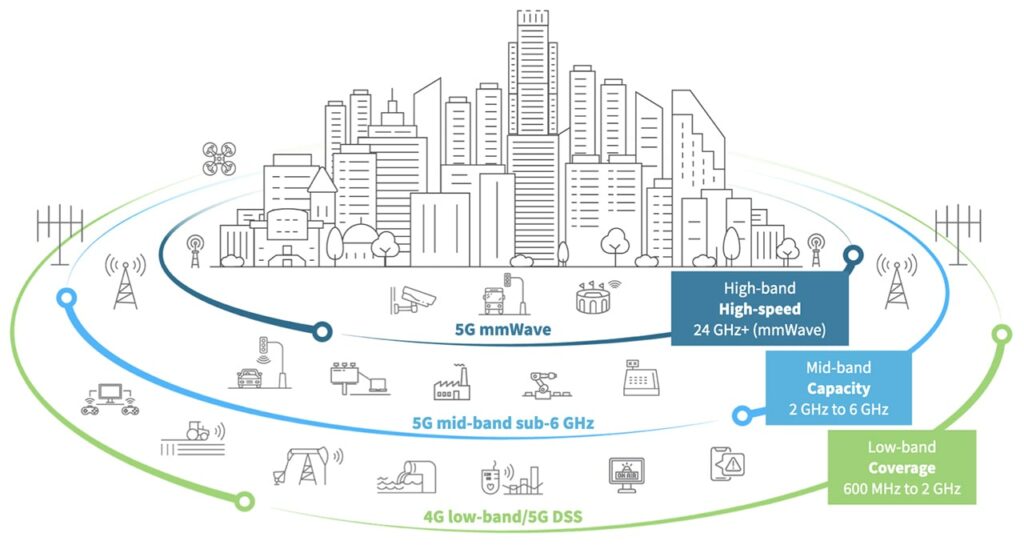
- Sub-6Ghz bands:
This category consists of frequencies below 6 GHz and most coverage will be deployed with these frequencies. They can further be divided into 2 subcategories:- Low-band frequencies:
Typically lower than 1 or 2 GHz. As said, these are great to cover large areas and provide deep indoor coverage. But they have been used in the past for broadcast TV and many other networks which means not much spectrum is left. Therefore, the 5G capacity on these bands will be lower than on the other bands since only small blocks of frequency are still available. However, they will serve excellently as network coverage layers for 5G. Worldwide 600 and 700 MHz are the most interesting frequencies.
- Mid-band frequencies:
These are frequencies between 2 and 6 GHz. These can provide much higher bandwidth than we know today since some large blocks of spectrum are still unused, while still providing a decent range. In Europe, 3.3-3.8 GHz is the most interesting block still available.
- Low-band frequencies:
- MmWave bands or high-band frequencies:
Millimeter-wave bands consist of very high frequencies (>24 GHz). They are called mmWave since their wavelength is in the millimeter range. These bands still have unused frequency blocks of up to 400 MHz wide. This will enable enormous data speeds but their coverage range will be limited. By nature, these high frequencies are not able to penetrate that well through walls. Much higher amounts of small antennas will be needed to deploy this frequency band. When you hear talk about a 5G antenna on a street light every few 100m, they typically talk about mmWave 5G. These frequencies are (at the date of writing) only used yet in very few countries and cities. MmWave frequencies will be needed to achieve 10-20 Gbps speeds and will in general not be deployed in the countryside. You can see an example of Verizon’s “5G Ultra-Wideband” mmWave street deployments in the picture below.
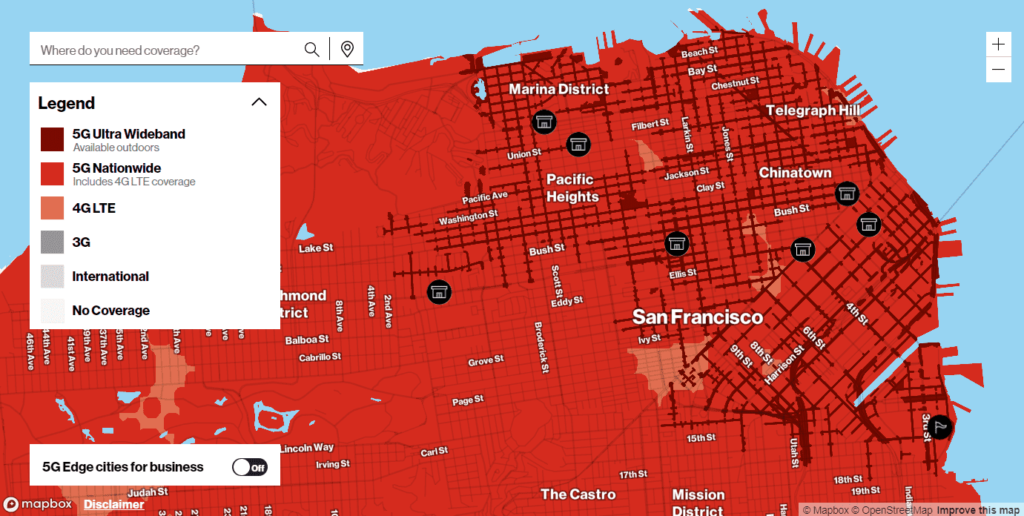
To give an idea of the possible speeds that will be easily achievable, I inserted the picture below. This picture was taken around September 2021 in Belgium in the city of Ghent on the 5G network of operator Proximus. At that time, no spectrum auction had happened yet in Belgium, and operators only had access to a small piece of temporary spectrum in the 3.4-3.8GHz band. As you can see, downlink speeds already surpassed the 1 Gbps mark with only a small part of the 5G spectrum available.
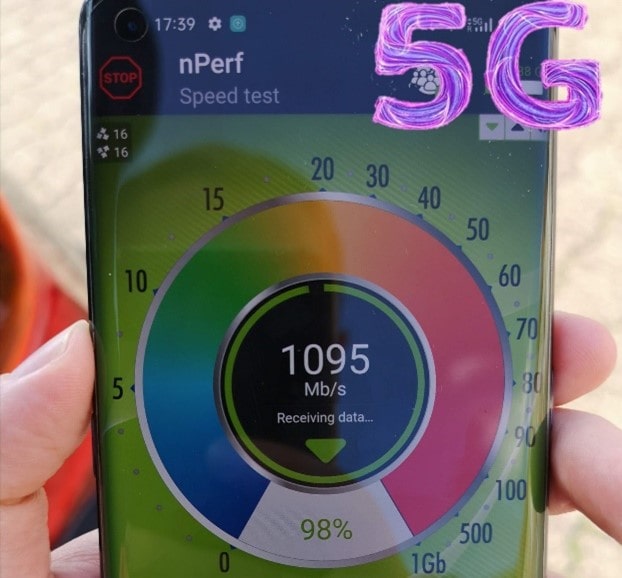
Millions of IoT connections
5G specifies the possibility of having 1 million connections per km² to deliver on the Internet of Things. But to connect everything, the connections need to be low cost and often also low power. These devices may not need to send that much data or transmit that often. To make these connections low cost, you can understand that they will not have all the capabilities as a device requiring high speed or low latency. Work on enabling the internet of things was already done before 5G with the arrival of both NB-IoT and LTE-M low-power wide-area networks (LPWAN). With their latest release, these technologies will have met the requirements for 5G and will be adopted as 5G IoT technologies. By doing so customers can rest assured when deploying NB-IoT or LTE-M connected devices that they are future-proof.
Network energy and spectrum efficiency
Energy efficiency was very important in the design of 5G. Different new antenna techniques were developed to reduce overhead and to use the available spectrum up to 3 times more efficiently resulting in a reduction of the amount of power needed for data transmissions. It is the goal to reduce the overall power needed for cellular networks while at the same time achieving much higher data speeds and capacity. To do this a network energy efficiency of up to 100 times compared to 4G was put in the requirements for 5G.
Software-defined networking and network slicing
A cellular network consists of 3 main elements: cell towers (also called Radio Access Network or RAN), a network core or the brain of the network in a datacenter, and the transmission network between them. Previously in 4G, the network could be considered as one big resource that was shared by all users connecting to it. It was configured in a best-for-all type of way to serve different needs as best as could be. Looking back, this was not ideal.
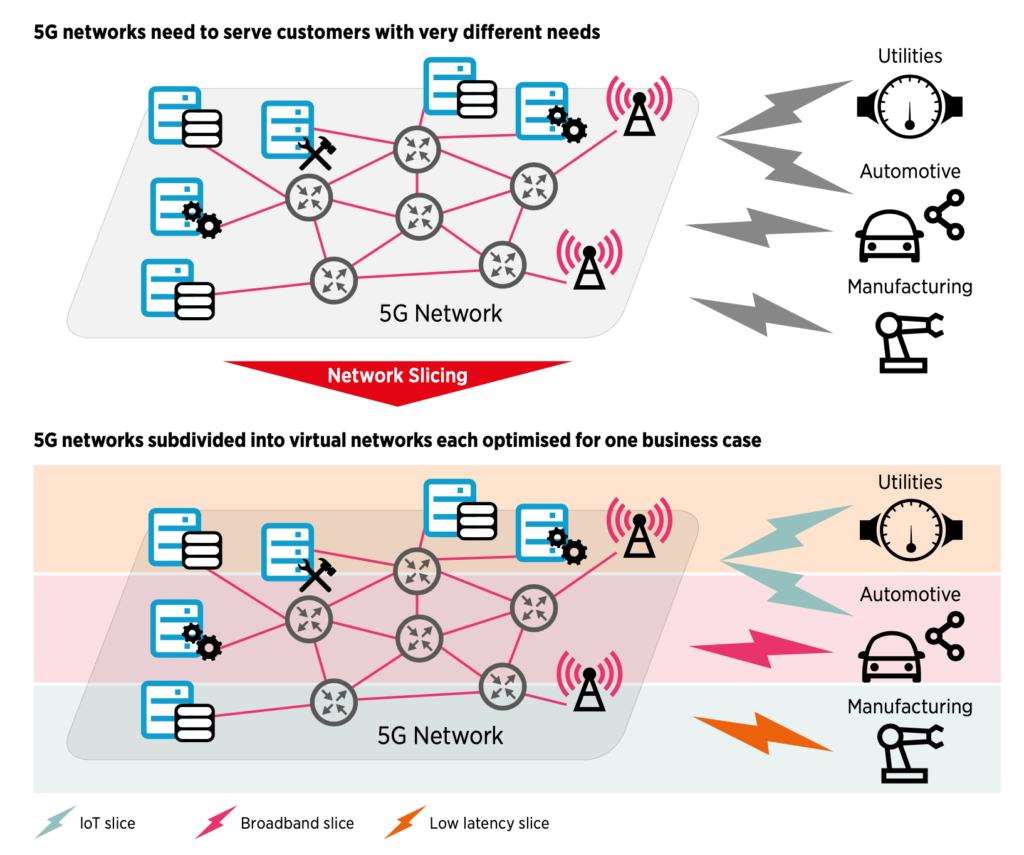
In 5G, both the RAN, the transmission, and the core network will become fully virtualized or software-defined. Operators will be able to dedicate a set of virtualized network resources (also called a ‘slice’) for a specific application or customer. Customers can then get the necessary assurance on the availability of these virtualized resources no matter what other users do on the network. By doing so, they can get an SLA on network-related factors such as availability, speed, capacity, latency, etc. Each slice can also be fully optimized with different settings compared to the rest of the network for a certain application-specific type of traffic.
Since everything is virtualized, it also means that the 5G core resources can be run at multiple locations instead of one big monolithic design in a large data center. This means different core functions and resources could be deployed more locally in small edge datacenters together with possible customer applications. This would make communication paths short and improve the end-to-end latency.
Ultra-reliable low-latency communication (uRLLC)
One of the 5G key performance indicators is having a 99.999 % assurance that your data is successfully sent within 1 ms latency (to the cell tower) for an ultra-reliable low latency communication service. This means you have guarantees on latency, availability of the network, and the correctness of the packet at arrival. This is needed for critical services that just cannot fail such as autonomous vehicles communicating with each other or remote control of large industrial machines.
The 5G ‘New Radio’ technology also significantly reduces the overall latency for all users. For normal non-critical users, expected latencies will be around 4-5 ms. This is done by using a flexible frame structure compared to 4G LTE allowing low-latency communication to happen whenever it is needed instead of needing to wait on other transmissions.
Another aspect of reliability is the maximum speed at which you can remain connected. With 5G vehicles can travel up to 500 km/h while holding the connection. We are not traveling at those speeds just yet. But 5G is here to stay for more than 10 years as 4G did. 5G also defined technology for low-latency vehicle to everything communication (V2X) which would let traffic infrastructure communicate with vehicles and vehicles with each other. As the human behind the steering wheel is still the main reason we can’t drive at higher speeds, who knows what speeds we might travel at in the next 10 years.
Massive MIMO and Beamforming
The concept of MIMO (multiple-input multiple-output) has been used in wireless communications for a long time. It basically means that a device like your smartphone can have multiple antennas inside to send different data at the same time and by doing so, multiply its connection speed. But now in 5G NR, cellular RAN can have a massive amount of small antenna elements. This allows the network to send data to different devices at the same time (or Multi-User MIMO) increasing the overall capacity, speed, and latency for all users.
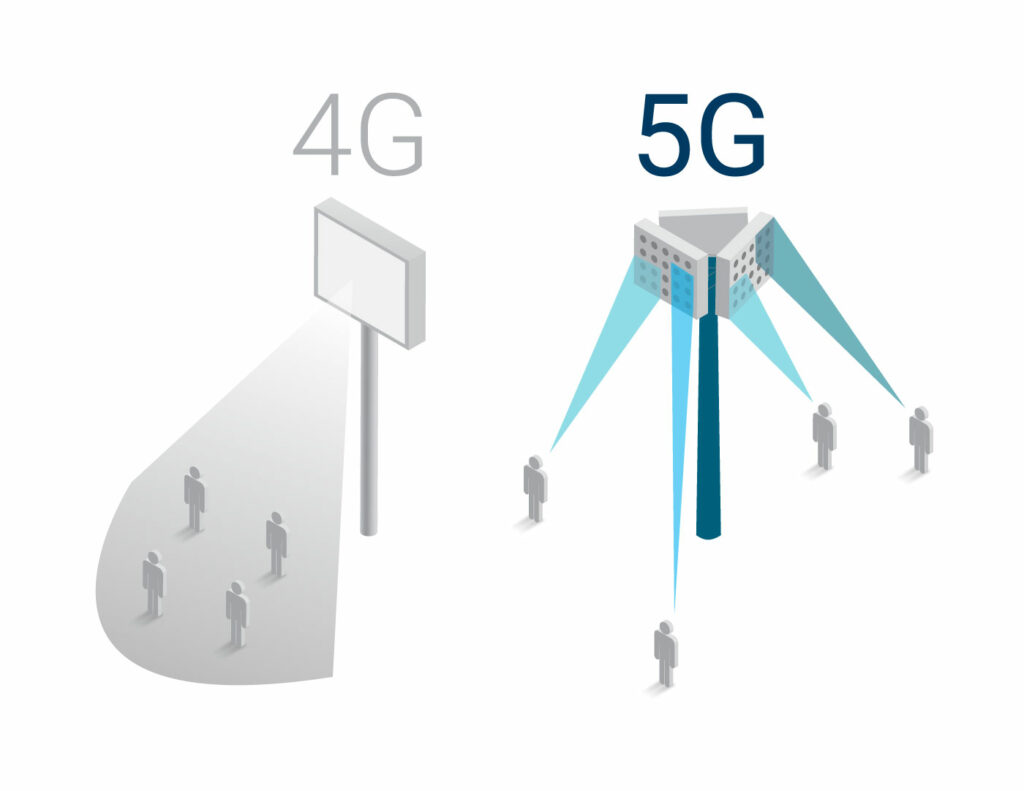
Those different antenna elements can also be used to focus a signal in a certain direction, rather than broadcasting to a wide area like was done in 4G. This is called beamforming. This can be done horizontally but also vertically to reach high buildings or even drones in the sky. By focusing the beam in a certain narrow direction it is also possible to reach users much further away from the antenna. This is particularly useful to get more range out of those higher 5G frequency bands.
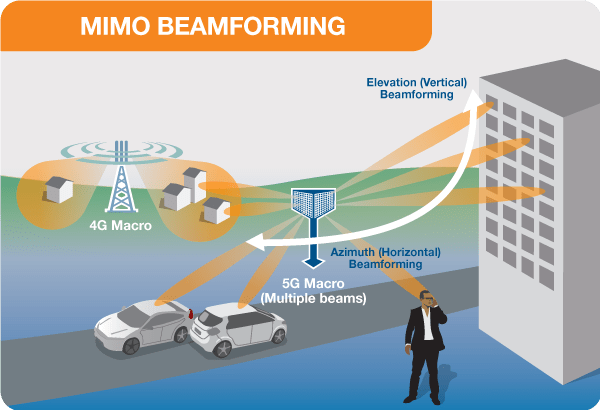
Conclusion and considerations
As you can see, 5G brings a lot of new capabilities and we only covered the main topics here. You could almost explain 5G as a kind of wireless fiber connection which is quite crazy. The combination of those different 5G capabilities mentioned above will enable new use cases such as drones flying beyond line of sight, autonomous vehicles, or wireless industrial factories. 5G will also serve as an enabler for many other technologies like cloud & edge computing or augmented reality.
As with everything though, such major changes don’t happen overnight. Not all of this technology, speed, and latency will be available from day one. It will come available and get better over time with different releases and software upgrades. Higher speeds will come first since network operators can deploy 5G NR massive MIMO antennas on their cell towers and hook them up to their existing 4G network core which is called a 5G non-standalone deployment. Most public networks today are therefore 5G non-standalone (5G NSA). Latency will get better and better and full network slicing will be available when network operators also deploy a new 5G core (5G standalone deployment).
But is it a problem that not all will be available from day 1? Not really. Some people seem to be waiting on 1 ms latency while an industrial robot or automated guided vehicle, in reality, can already run with a reliable 10 ms high-speed connection, which is much better than 4G or anything else can really offer. It is crucial though to know the technology and when and how you can make proper use of it.
Do you need to wait on 6G?
Hold your horses. As you can see from the previous timelines from the 4G era, 5G will be a part of our lives for the next 10 years or more. 5G is delivering on all that was previously asked for by the market. So let’s not worry about the possibilities of 6G just yet. Research about what it will need to entail still needs to properly start and it will take another 10 years or so for the first 6G networks to come out.
If you want to know more or need guidance for your specific situation or project, feel free to contact us. It is our mission to guide our customers with our no-nonsense approach on wireless networks and internet of things so they can fully benefit from it.
